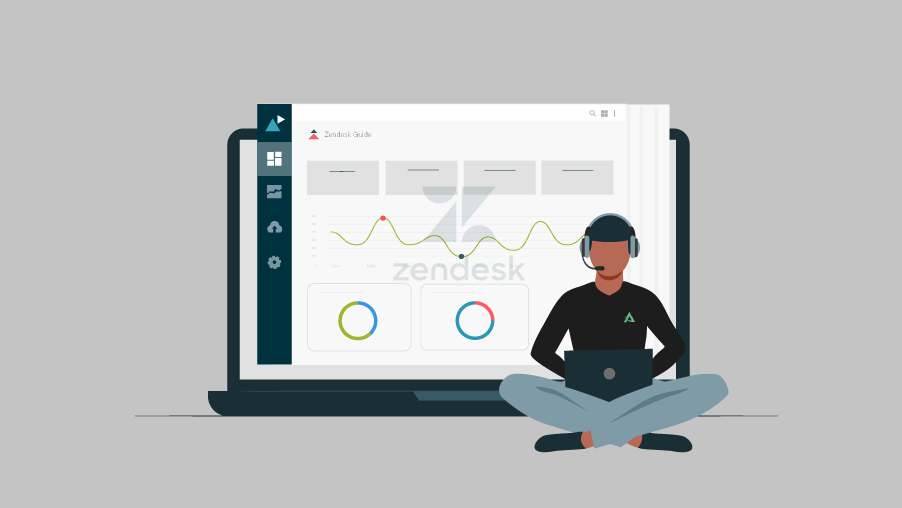-
Services
-
Locations
- Philippines
- United States
- Colombia
- Eastern Europe
Locations -
Industries
-
Resources
- E-Books
- Blog
- Case Studies
Resources - About Us
- Careers
CX professionals have access to more customer data than ever before. For many, this vast sea of information can be daunting to navigate and may leave people wondering, “What data points should we even track?”
At Zendesk we are passionate about the importance of having easy-to-access analytics ad kow businesses that harness the full potential of their customer data are able to respond to customers faster and provide better experiences. We also recognize that CX leaders have a diverse set of responsibilities and that analytics can take a backseat to hiring, training your team, and keeping up with customer tickets. But an analytics tool can do so much for a customer experience team, including improving team efficiency and illuminating what drives a positive customer interaction.
That’s why we built Zendesk Explore, customer analytics software to measure and improve the entire customer experience. With Zendesk Explore, you get instant access to the analytics that matter—and the deeper understanding of your customers and business that comes with it.
Read on for five ways that Zendesk Explore can help you make the most of your customer data.
Optimize and predict staffing needs based on channel usage and volume
What if you had an eye into the future and an ability to predict how many more tickets, chats, or calls your team was going to receive a month from today? And what if you also knew how a volume uptick would impact your response times and customer satisfaction?
These are the types of questions that powerful predictive analytics can help your team answer, and you don’t need to be a fancy data scientist to do it. With Zendesk’s reporting tools, your business can use historical trends in your data to estimate what your team might expect in the coming weeks or months. This type of insight can help your team in a variety of ways; from making sure your channels are properly staffed, to ensuring that that you’re serving customers over the right channel.
Justify the ROI for additional headcount
As a CX leader, you often know when you need additional teammates to keep up with customer demand, but building a business case to justify extra folks can be challenging. You know that having someone new on your team will help you serve customers faster and lead to higher satisfaction, but how can you illustrate that for others?
With Explore, you can. With Explore, many businesses build reports that show correlation between agents, response times, and satisfaction scores. These types of reports can help back up an ask for additional headcount to keep up with customer demand and help others in the business visualize the impact that understaffing your support team may have on the overall customer experience.
Understand techniques from high performers and use insights to coach teams
Having a clear sense of how your team is performing is key to running an effective contact center, especially when you can learn what actions your high-performing team members take and use what you’ve learned to coach up the rest of your team. Take for example an agent with a high satisfaction score, with Zendesk Explore you can dig into that agent’s tickets to understand what’s leading to positive satisfaction, whether it be low-touch resolutions, fast response times, or using the right macros to get the right information over to customers. These learnings can be shared broadly through team huddles, or even used to onboard new agents by pairing them with high performing team members as a partner for shadowing and ramp-up.
Learn from and improve the way that AI deflects ticket volumes
Zendesk offers a powerful tool to help deflect customer questions via AI, called Answer Bot, which automatically serves up relevant knowledge base content based on a customer question. Answer Bot uses machine learning to surface articles to your customers to proactively resolve their issues. In Explore, you can understand metrics like Resolution Rate and how Answer Bot is contributing to ticket resolution over time at a glance. You can even see which articles are being suggested the most often, and the percent of resolutions those are driving.
In addition to monitoring trends, take action on this data by regularly reviewing which articles are performing well and which are not getting any clicks. These insights can drive content strategy and inform what content needs to be prioritized next based on impact and demand. By optimizing content based on data, you can effectively drive up ticket deflection rates and improve click through and resolution rates of articles surfaced by Answer Bot.
Provide insight to the rest of the business
CX leaders, who may call their department customer service, customer experience, or advocacy, are increasingly strategic within their organization. That should include envisioning their department as the hub of customer intelligence for the rest of their business.
Customer interactions generate an incredible amount of information that can be used to do so much more within an organization. All CX teams need to do is change the way they think about their data and think broadly about how the metrics they capture could impact other business units. For example, businesses often categorize the types of tickets their business receives. This information is valuable to help a CX team optimize their workflows and process but it’s also valuable information for a sales, marketing, or product team to understand what your customers are interested in. With this information, other departments could optimize their marketing campaigns, roll out new products, or build new promotional offers to generate more revenue.
Customer analytics acts as a powerful fuel for your business. For more about Zendesk Explore, visit www.zendesk.com/explore


